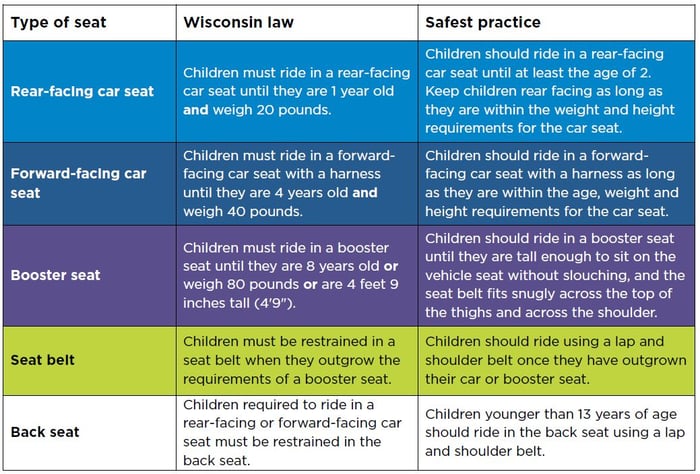Safest Ride for Kids
Jump to:
Car crashes are one of the leading causes of death and injury in children. Pediatricians and injury prevention experts work together to find the best ways to keep kids safe. Use this guide to know which car seat is safest for your child.
View our Car Seat Basics Video Playlist

Proper fit and use is most important at every stage
Rear facing
- Top of the child’s head is at least one inch below the top of the car seat
- Harness straps at or below the shoulders and should be snug
- Chest clip is at armpit level.
- Buckle is in front of the child with no gaps
Forward facing
- Top of the child’s ears are below the top of the car seat.
- Harness straps are at or above the shoulders and should be snug
- Chest clip is at armpit level
- Buckle is in front of the child with no gaps
Booster seat
- Top of the child’s ears are below the top of the booster or vehicle headrest
- Shoulder belt lies flat and snug between the neck and shoulder
- Child sits back against the booster seat or if using a backless booster, against the vehicle seat back
- Lap belt lies flat and snug on the top of the thighs
Seat belt
- Adjust headrest to the middle of the back of the head
- Shoulder belt lies flat on collarbone
- Lap belt lies flat and snug on the tops of the thighs, not the belly
- Children should ride in the back seat until age 13.
Using car seats correctly
- Always check the car seat and vehicle owner ’s manual for the correct way to use and install.
- Check with the car seat manufacturer before using accessories that did not come with theseat.
- This includes headrests, blankets and padding.
- Once installed, the seat should move no more than one inch from side to side or front to backat the belt path.
- Do not use car seats that are old, expired or have been in a crash.
Wisconsin law and safest practice
The Wisconsin child passenger safety law states the minimum requirements for safety. Pediatricians and injury prevention professionals recommend more than the minimum to protect children in a crash. This recommendation is the safest practice.
Contact
safekidswi.org
carseatwi@childrenswi.org
Car seat hotline: (855) 224-3692





